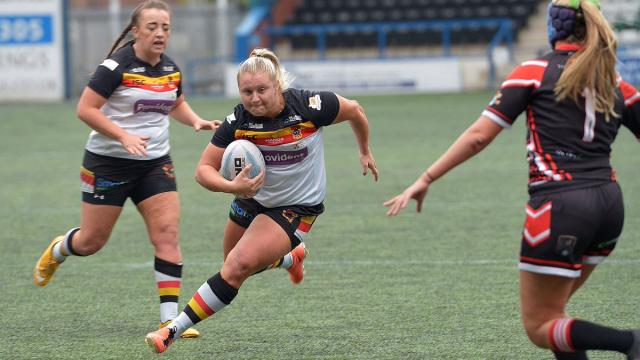Although it is nearly a week since Leeds Rhinos Women beat their Castleford Tigers counterparts in a highly-entertaining Challenge Cup Final, people associated with the game of Rugby League are still talking about it. That in itself is an achievement; broadcast live on the BBC website, both the highlights and the report are still available for those that are still interested, giving the women's game a great boost in terms of exposure.
Since the Women's Super League inaugural season in 2017, the sport has ballooned considerably with more and more participating in the game.
And, the Challenge Cup Final not only demonstrated how far the women's game had come but the potential for how much it can grow.
Progression has been huge
I've been a big fan of women's Rugby League ever since I reported on a fixture early on in the season. It was at Castleford's Mend-a-Hose Jungle as the ladies side took on the Wigan Warriors women's team. That day, the game ended in a 14-14 draw with no love lost on the pitch in what was a rip-roaring, physical and skilful match. I have monitored how the Women's Super League has been getting on all year, and just four points separate the top four of Leeds, St Helens, Wigan, and Castleford - though the Tigers and Warriors have a game in hand on Saints and Leeds.
The amount of progress the women's game has made since that Castleford-Wigan affair is huge; in fact not only do most of the Women's Super League teams have squads that are brimming with talent, the majority have also added their own under-19s side because the demand is that high. Teenage girls are jumping on the bandwagon and want to be a part of something special - this can only be good for the sport of Rugby League as a whole.
The final itself
As word and interest spread, the hype surrounding last weekend's Challenge Cup Final was the greatest the women's game had ever seen. The fact that it was broadcasted on the BBC website enabled those who would not travel to Warrington's Halliwell Jones Stadium - why the RFL didn't switch the venue to Yorkshire for two Yorkshire sides to maximise the attendance was baffling - to watch the game.
No statistics have been released about how widely viewed the final was, but the hashtag #womensFinals was widely used by many on the social media giant Twitter. Never before had a women's game been so eagerly anticipated and it did not disappoint.
The game was incredibly entertaining from the first minute to the last, with Leeds running out eventual winners 20-14. The attendance was over 1,000 which was impressive considering that the game was 60 miles and two hours away from both sides. The cup final was actually a double-header with the Challenge Shield being played before it on the same ground, providing an afternoon of great entertainment.
RFL should take advantage
The final got a lot of fans, neutrals, and pundits talking about the women's game on a scale never seen before.
The RFL must exploit this good feeling to expand the game further. More women's games need to be held at top stadia - where their male counterparts play would be the most sensible.
Action needs to be taken to push the women's game further into the spotlight by live streaming as many games as possible while the governing body also needs a strong sponsorship drive to enhance the brand - the talent and quality is there it just needs a solid platform from which to be shown.
Momentum is growing for the women's game; it just needs that push from those at the top to enhance its popularity.



